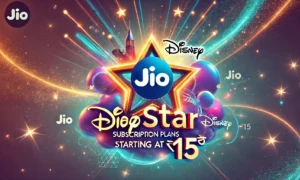Introduction
In today’s competitive business environment, hiring the right talent is crucial for organizational success. With the ongoing digital transformation of industries and the increased demand for specialized skill sets, businesses are under immense pressure to find the best candidates efficiently. LinkedIn, now a part of Microsoft, has been at the forefront of innovating talent acquisition through its suite of AI-powered tools designed to streamline the hiring process. These tools not only help businesses find the right talent but also assess both hard and soft skills, addressing the evolving needs of modern workplaces.
In 2024 and beyond, LinkedIn’s integration of Artificial Intelligence (AI) into talent acquisition strategies represents a significant leap forward in the way companies approach hiring and human resources management. LinkedIn’s tools, which leverage machine learning and natural language processing, are helping employers sift through large volumes of applicants, match candidates with specific job requirements, and assess traits like emotional intelligence, communication skills, and cultural fit—soft skills that were traditionally hard to measure.
This case study explores LinkedIn’s AI-powered tools in detail, analyzing how they help businesses enhance their hiring processes and improve overall talent management. It examines the advantages, challenges, and future opportunities of using AI for recruitment and skill assessment, and how Microsoft’s involvement in LinkedIn’s innovation accelerates the integration of cutting-edge technologies into the talent acquisition landscape.
The Evolution of LinkedIn’s Talent Solutions
A New Era of Recruitment
Since its founding in 2002, LinkedIn has evolved from a professional networking platform to the world’s largest career-oriented social media site, with over 900 million members in more than 200 countries. LinkedIn’s Talent Solutions, which include job postings, recruiter tools, and employee referral systems, have become indispensable for businesses looking to attract talent. However, as the job market becomes more competitive, LinkedIn has expanded its offerings to integrate AI and automation into the hiring process, making it more efficient, accurate, and effective.
The integration of AI into LinkedIn’s platform began in earnest after Microsoft’s acquisition of LinkedIn in 2016. With Microsoft’s expertise in cloud computing, AI, and data analytics, LinkedIn was able to supercharge its recruitment tools, making them smarter and more user-centric. Over the past few years, LinkedIn has rolled out a suite of AI-powered solutions aimed at helping businesses streamline the hiring process, from sourcing candidates to assessing their skills.
LinkedIn’s AI-Powered Tools for Talent Acquisition
LinkedIn offers a variety of AI-powered tools for businesses, which aim to help recruiters identify, evaluate, and hire talent more effectively. Below are some of the most important AI-driven features that are transforming the talent acquisition landscape:
1. LinkedIn Recruiter
LinkedIn Recruiter is one of the company’s core tools for sourcing and engaging with candidates. Using AI and machine learning, this tool provides personalized candidate recommendations based on specific job descriptions, company needs, and hiring preferences. It uses algorithms to match candidate profiles to job postings, highlighting the most relevant applicants. LinkedIn Recruiter also incorporates data from users’ networks, so it can suggest potential candidates that may not appear in traditional searches.
Key Features:
- AI Matching: LinkedIn Recruiter’s AI algorithms match job postings with candidates based on past hiring data, profile information, and engagement activity.
- Skills Assessment: The AI assesses both hard and soft skills from candidate profiles and previous job experience to determine if they fit the requirements of the job.
- Candidate Engagement: The platform uses AI-driven insights to suggest the best way to reach out to candidates, including personalized messaging templates that are most likely to resonate with specific candidates.
2. LinkedIn Talent Insights
Talent Insights is a data-driven tool that allows companies to access workforce analytics and trends. By leveraging AI and big data, this tool offers in-depth insights into the talent market, helping businesses understand current hiring trends, salary benchmarks, and industry-specific talent gaps.
Key Features:
- Market Insights: AI provides actionable data on the availability of specific skills in different locations, industry trends, and salary ranges, helping recruiters make informed decisions.
- Talent Pool Analysis: Using AI, Talent Insights helps identify where to source candidates for specific skill sets and how to optimize the hiring process in response to market conditions.
3. LinkedIn Skill Assessments
LinkedIn’s Skill Assessments feature helps employers evaluate candidates’ technical proficiency and soft skills directly on the platform. With AI, LinkedIn allows businesses to assess both hard and soft skills through pre-built or customized skill tests that candidates can opt into. These tests cover a broad range of professional skills, from technical programming languages to leadership and communication skills.
Key Features:
- Hard Skill Assessments: LinkedIn offers a series of standardized assessments for skills in areas such as coding, project management, design, and marketing.
- Soft Skill Assessments: AI-powered algorithms can analyze candidate responses to behavioral questions or case study scenarios to assess emotional intelligence, decision-making, and communication.
- Certificates and Endorsements: Once candidates complete a skill assessment, they can earn badges or certificates that appear on their LinkedIn profiles, signaling their proficiency to recruiters.
4. LinkedIn Learning
LinkedIn Learning, which is fully integrated with LinkedIn’s Talent Solutions, is an AI-powered educational platform that provides personalized learning recommendations to users. For businesses, it can help identify skill gaps within their teams and provide employees with training programs to bridge those gaps.
Key Features:
- Personalized Learning Paths: LinkedIn Learning uses AI to analyze employees’ current skills and suggest relevant courses and certifications to help them grow in their careers.
- Corporate Training: LinkedIn Learning allows businesses to provide training to employees and track their progress, ensuring they are constantly developing relevant skills.
- Skill Gap Identification: AI analyzes workforce trends and employee performance to identify skills that are lacking within an organization and recommend targeted learning programs.
How AI is Enhancing Talent Acquisition
AI tools like those from LinkedIn are addressing some of the most significant challenges in talent acquisition, including:
1. Reducing Bias in Hiring
AI-powered tools are helping to reduce unconscious bias in recruitment processes. Traditional hiring methods often rely on subjective judgment, which can be influenced by biases related to age, gender, race, and education. LinkedIn’s AI tools analyze candidate data in a more objective manner, considering factors such as qualifications, experience, and skills, rather than subjective traits. This helps ensure a more diverse and inclusive workforce by focusing on the candidate’s actual abilities.
2. Improving Candidate Matching
AI’s ability to match job descriptions with the right candidates has improved the accuracy and speed of recruitment. LinkedIn’s AI tools can sift through millions of profiles and job listings to identify the most relevant candidates, improving the chances of finding individuals who are the best fit for a role. By using data-driven algorithms, LinkedIn helps recruiters avoid the mistakes of traditional job matching, which can lead to suboptimal hires.
3. Enhanced Candidate Experience
The AI-powered tools not only benefit businesses but also improve the candidate experience. Through more accurate job recommendations, real-time communication, and personalized feedback, AI helps candidates engage with the recruitment process more efficiently. This improves the likelihood of retaining top talent and ensures that candidates remain engaged throughout the hiring process.
4. Predicting Future Performance
AI algorithms are increasingly being used to predict a candidate’s potential success in a role based on historical data and behavioral analysis. LinkedIn’s tools can analyze past hiring decisions, performance reviews, and other data points to offer insights into which candidates are more likely to succeed. This predictive analysis helps companies make better-informed hiring decisions, reducing turnover and improving employee retention.
The Role of Microsoft in Driving AI Innovation at LinkedIn
When Microsoft acquired LinkedIn in 2016 for $26.2 billion, the acquisition was seen as a significant step toward creating a more integrated and AI-driven ecosystem for business professionals. Microsoft’s extensive experience in artificial intelligence, cloud computing, and enterprise software has played a pivotal role in accelerating the development of LinkedIn’s AI capabilities. LinkedIn now benefits from Microsoft’s cloud platform, Azure, and advanced AI services, which have allowed for the faster implementation and scalability of AI-powered tools for talent acquisition.
Microsoft’s integration of Microsoft 365 with LinkedIn is another significant development. By leveraging LinkedIn data and AI-powered insights, businesses using tools like Office 365, Dynamics 365, and Teams can seamlessly access LinkedIn profiles, skill assessments, and recruitment analytics, helping HR teams make better, data-backed decisions. This integration strengthens LinkedIn’s position as the go-to platform for talent acquisition in the corporate world, combining Microsoft’s enterprise software tools with LinkedIn’s vast professional network.
Challenges and Future Opportunities
Despite the tremendous potential of AI in recruitment, LinkedIn faces several challenges in its quest to revolutionize talent acquisition:
1. Data Privacy and Ethics
As AI becomes more ingrained in the recruitment process, issues surrounding data privacy, security, and ethics have become more prominent. LinkedIn’s AI tools rely on vast amounts of personal data, including job history, skills, and behavioral assessments, which raises concerns about how this data is being used, stored, and protected. It is crucial for LinkedIn to ensure that its AI-driven recruitment tools are transparent, fair, and comply with data protection regulations like GDPR.
2. Bias in AI Algorithms
While AI has the potential to reduce human bias, there is a risk that the algorithms themselves could perpetuate existing biases. If the data used to train these algorithms contains inherent biases (for example, gender or racial biases), the AI tools may inadvertently reinforce those biases. LinkedIn and Microsoft must ensure their algorithms are constantly monitored and improved to mitigate this risk.
3. Adoption and Integration
Although LinkedIn’s AI-powered recruitment tools offer numerous benefits, many businesses still rely on traditional hiring practices. Overcoming resistance to AI adoption and ensuring the seamless integration of these tools into existing HR processes remains a key challenge for LinkedIn.
Conclusion
LinkedIn, with the backing of Microsoft, is at the forefront of transforming the recruitment process through AI-powered tools that help businesses find the right talent and assess both hard and soft skills. By streamlining candidate sourcing, enhancing skill assessments, and predicting future performance, LinkedIn is setting new standards for talent acquisition in the digital age. As AI continues to evolve, LinkedIn’s tools will play an increasingly central role in helping businesses create more diverse, efficient, and data-driven hiring processes.
For companies aiming to thrive in a fast-changing business environment, LinkedIn’s AI-powered recruitment tools offer a clear path forward—one that combines innovation with inclusivity, efficiency, and personalized talent management.
| Aspect | Impact of LinkedIn’s AI-Powered Tools |
|---|---|
| Candidate Matching | AI algorithms help businesses match candidates with job descriptions more accurately, improving hire quality. |
| Bias Reduction | AI-driven hiring reduces human bias, ensuring a more diverse and inclusive workforce. |
| Predictive Performance | AI tools predict candidate success based on historical data, improving hiring accuracy and employee retention. |
| Enhanced Candidate Experience | Personalized job recommendations, communication, and feedback improve the candidate experience. |
| Data-Driven Insights | AI-powered tools provide real-time insights and analytics to help businesses make more informed talent decisions. |


